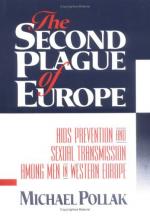|
This section contains 753 words (approx. 3 pages at 300 words per page) |

|
The bubonic plague is a highly infectious and fearsome disease that attacks the lungs and lymph nodes. It is also called the Black Death or black plague. The bubonic plague is caused by Pasteurella pestis, a bacteria which resides within infected fleas and rats. Victims of the bubonic plague develop early symptoms, such as shivering, vomiting, headache, intolerance to light, back and limb pain, and a white coating on the tongue. Eventually, they develop black egg-sized swellings (buboes) filled with blood and pus under the armpits and in the groin. As the disease progresses, internal bleeding leads to black patches on the skin, and the victim may die in three to five days. Invasion of the lungs by the bacterium causes an equally fatal form of the plague called pneumonic plague, which can be transmitted from person to person by air droplets and saliva.
Historical records...
|
This section contains 753 words (approx. 3 pages at 300 words per page) |

|


